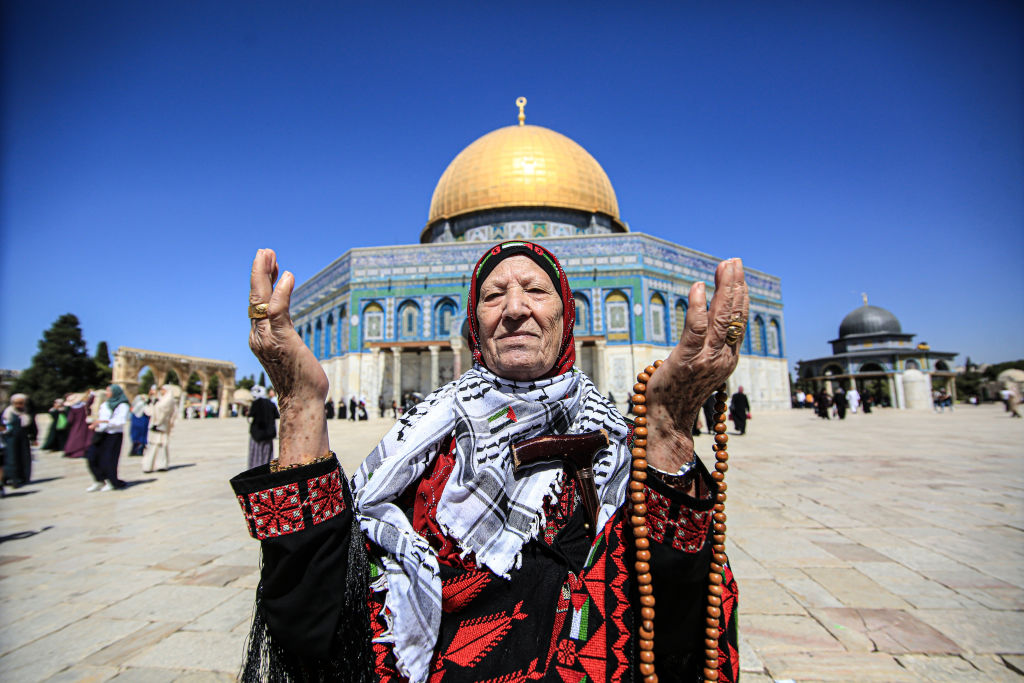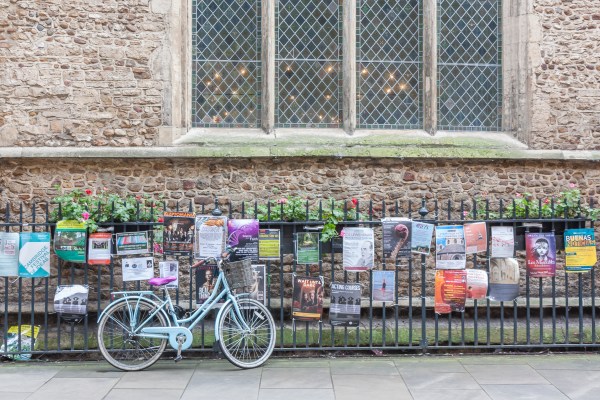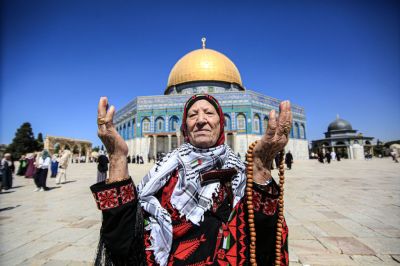With the holy month of Ramadan beginning Sunday for Muslims, attention is again focusing on the long history of religious tension in Jerusalem, which is often said to be the third-holiest city in Islam.
While there is no Islamic Vatican to make an authoritative, infallible ranking, most Muslims would agree with the statement and there are ample grounds in Islamic tradition to justify it.
Before doing so, let me reemphasize the phrase “in Islamic tradition.” To make a very complex case very simple, there aren’t a lot of direct, contemporary sources for the foundation of Islam in the early seventh century A.D. Consequently, most scholars and most Muslims rely on a body of narratives that seem to have been first written down at length in the ninth century. Two hundred years is a long span for unrecorded history, even in an age when orality can be assumed to have bred better memories. In recent years, however, a small camp of mostly German historians has raised some issues around the historical reliability of these narratives. That is a story for another day; for most historians over time, these narratives have been assumed to be basically reliable. Because they are believed by most Muslims, they are what I am referring here to as Islamic tradition.
First, we can turn to the name of Jerusalem across the Muslim world. Most Dispatch readers will recognize the Arabic term al-Quds or the name of the Iranian Revolutionary Guard’s Quds Force. It refers to Jerusalem, which was more fully and originally referred to as Madînat al-Quds in Arabic, literally “the city of holiness,” or as Jews and Christians conventionally describe it, the Holy City. Quds can also denote a holy place or sanctuary, and it’s likely that the understanding of this term was either derived from the Holy of Holies in the Jewish Temple or came to encompass its reconfigured Islamic identity as the Temple Mount sanctuary, more about which later.
Muslims recognized Jerusalem’s sacrality from a very early date, as shown by a report—a ḥadîth, a codified account of an incident from the prophetic era—that for roughly the first year and a half of Muhammad’s mission, he instructed his followers to pray toward Jerusalem, before reorienting them toward Mecca. This ḥadîth was only written down in the ninth century, so its historic reliability may be questioned but at the very least it shows a reverence for the city from a very early point.
Why? Muslim salvation history, to borrow an inapposite phrase from Christian theology, deems David and Solomon—among other eminent biblical figures—Muslim prophets, and so imbues the Islamic Jerusalem with an aura of holiness similar, though not identical, to the Jewish Jerusalem or the Christian Jerusalem.
Within this theological tradition, the story of Muhammad’s Night Journey (which looks to most outsiders as rather legendary, given that the Muslim prophet is transported on a flying, human-headed horse) is a key element. The scriptural basis of the Night Journey is the Quranic verse “Glory be to the One Who took His servant by night from the Sacred Mosque to the Farthest Mosque whose surroundings We have blessed, so that We may show him some of Our signs. Indeed, He alone is the All-Hearing, All-Seeing.” (17:1) The reader may be puzzled by the shifting between “we” and “he” pronouns for God, but this shifting is common, if confusing, in the Quran. The details of the Night Journey are provided in ḥadîths that add theological (and, in the case of the human-headed horse, probably mythological) elements. However, the terms “Sacred Mosque” and “Farthest Mosque” are key here, respectively al-masjid al-ḥarâm and al-masjid al-aqṣâ. While there’s no indication in the text where these places are, tradition identifies them with Mecca and Jerusalem, respectively.
Sharp-eyed readers will have noticed that “the farthest mosque” is the “al-Aqṣâ mosque,” which is the name now given to the precinct of the Dome of the Rock and the al-Aqṣâ Friday Mosque (Jami‘at al-Aqṣâ). Readers familiar with the history will object that the Night Journey is supposed to have taken place in 621 and the Dome of the Rock was not built until around 691. Masjid, however literally means “place of prostration,” and seems to have indicated any place of worship (including a Christian church), so the idea that the Temple Mount might have been “the most distant place of worship” is less far-fetched than it might appear at first glance, though there’s some evidence that the earliest Muslim interpreters believed it to simply mean heaven itself. However, fairly early on it seems to have become identified with the Temple Mount, and described as the site of Muhammad’s meeting with Abraham, Moses, and Jesus, and his leading them in prayer before ascending to the seven levels of heaven, guided by the Archangel Gabriel (Jibrîl), where Muhammad, as the perfect man, was, uniquely among humans, admitted to the immediate presence of God, who ratified and clarified his mission.
The Dome of the Rock is another reason Jerusalem is sacred to Muslims, but not merely because of its location upon al-masjid al-aqṣâ. Although the eponymous rock is said to be Muhammad’s takeoff point for his ascension to heaven, Islamic tradition also identifies it as the site of Abraham’s aborted sacrifice of Isaac. The rock is also the Foundation Stone in Jewish tradition, the first-created part, center, and omphalos of the world. The Holy of Holies in Solomon’s Temple was built upon it, it served as the seat of the Ark of the Covenant, and was revered in the Ark’s absence in the Second Temple period. Islamic tradition relates that the cavern in it called the Well of Souls was formed by the Foundation Stone’s trying to follow Muhammad to heaven, and identifies not only Muhammad’s footprint in the stone, but the handprint where Gabriel restrained the Stone, holding it in place.
Built by ‘Abd al-Malik (r. 685–705), an early caliph, the octagonal, domed structure of the Dome of the Rock echoes a Byzantine church or martyrium or perhaps a Zoroastrian fire temple that ‘Abd al-Malik might have encountered in Persian-influenced Iraq. ‘Abd al-Malik’s ideological agenda, however, is proclaimed in the various monumental inscriptions on the structure, a mixture of verses from the Quran and other statements that seem predominantly concerned with condemning the idolatrous association (Arabic shirk) of things with God, perhaps principally the person of Jesus. In Islamic tradition, this represents a triumphant statement of the new faith against the old, corrupted, defeated creed of Byzantium. Given that the movement at whose head ‘Abd al-Malik stood had not yet seem to have dubbed themselves “Muslims,” but rather “Believers,” with some kind of participation by Christians and Jews, the details of the theology involved may have been messier and murkier. Perhaps uniting anti-Trinitarian Christians with Jews and others interested in a less complex, more uncompromising monotheism than that on offer by the Chalcedonian Christianity which the Byzantines had adopted. It has also been suggested that the Dome of the Rock might have been built to serve as a pilgrimage destination in opposition to Mecca, which was then under the control of ‘Abd al-Malik’s rival caliph ‘Abdallâh ibn al-Zubayr.
Whatever the genesis of the Dome of the Rock, it has served to anchor Jerusalem in the Muslim imagination. Numerous apocalyptic accounts call the Temple Mount and the Dome of the Rock the site of the return of Jesus at the end of time. As in Christian eschatology, the return of Jesus figures centrally in Islamic eschatological traditions, e.g., in those where he is borne by angels from heaven to the minaret of the Umayyad Mosque of Damascus, seeks out the one-eyed Antichrist figure known as the Dajjâl who will have been working demonically-aided miracles, chases him to the city of Lod in Israel, and there runs him through with a sword—or simply strikes him dead with a lethal glance.
The Dome of the Rock was significantly restored and renovated by another Muslim sovereign who believed the end was nigh and that he would play an important part in its coming to pass. The Ottoman sultan Süleyman I (who reigned 1520–1566) was given the Muslim version of the name of King Solomon, proverbially spectacular ruler and Temple builder. Known as the Magnificent to Western history (and a very entertaining if historically dodgy Turkish historical soap opera) and to Ottoman posterity as the Lawgiver, Süleyman had every reason to believe he was touched by divine favor—nomen est omen. Given the name of a prophet-king, he inherited his family’s claim to the Roman imperium, the right to universal rule that many (even Christian observers) believed had passed to the House of Osman by right of conquest in 1453, when they took Rome’s capital, Constantinople. Moreover, Süleyman inherited Jerusalem in his patrimony, when his terrifying father, Selim I (who reigned 1512–1520) died at 50, having conquered most of what’s now the Arabic-speaking Middle East.
Süleyman did his bit to make the then rather sleepy, but growing, town of Jerusalem a little more magnificent as well. (Jerusalem then had roughly 5,000 to 10,000 inhabitants, which made it roughly the size of Como in Italy or two-thirds the size of Aachen in Belgium.) Not only did Süleyman rebuild the city walls (the current walls of the city are his construction), but he renovated the Dome of the Rock, most noticeably by Ottomanizing the exterior with brilliant Turkish faience tilework (which were themselves replaced with faithful, Italian-manufactured copies in the 1960s).
Jerusalem, then, is the City of the Sanctuary to Muslims as the site of Abraham’s sacrifice, the residence of the prophets David, Solomon, and Elijah, the theater of Jesus’s life, a way station on the Night Journey, and, perhaps as commemorated by the Dome of the Rock, the setting for the events of the apocalypse. Jews and Christians will recognize elements of their own beliefs refracted, sometimes as if in a fun-house mirror, in this tradition, but will have no problem identifying why Jerusalem occupies an important place in the Islamic imagination.






Please note that we at The Dispatch hold ourselves, our work, and our commenters to a higher standard than other places on the internet. We welcome comments that foster genuine debate or discussion—including comments critical of us or our work—but responses that include ad hominem attacks on fellow Dispatch members or are intended to stoke fear and anger may be moderated.
With your membership, you only have the ability to comment on The Morning Dispatch articles. Consider upgrading to join the conversation everywhere.